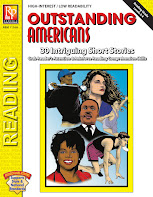The holidays. People wishing others joy, peace, and love. Sometimes the wish seems far-fetched. Stress and chaos abound during the holiday season. Between last-minute shopping, bickering relatives, cooking, cleaning, parties you are too tired for, and endless to-do lists, it can be easy to lose perspective. Don’t let that stress weasel its way into your life and your classroom.
Nurture Yourself
Research finds that between one-third to one-half of teachers quit within their first five years. During the holidays we are taught to put others first. Teachers might feel compelled to always do so. This is a recipe for disaster. To serve others, you must first serve yourself. The oft-told advice of fresh air, exercise, down-time, meditation and bubble baths may be trite, but they hold true. Treat yourself. Whatever that means to you. Pretend like it’s your birthday and do what you want more than once a year. You deserve it.
Say “No”
If you are a people-pleaser this is going to be difficult for you. But dip your toe in and just try it. If someone asks you to go somewhere or do something and you don’t feel up to it, just say, “no”. You don’t have to give a reason or excuse. It is better to say “no” to a few things so you can do just one or two things well, rather than spreading yourself too thin. When you do too much, you become drained. When you become drained, you become resentful. Don’t fall into the trap!
Resentment Kills Passion
Teachers start with passion in their hearts to change the lives of students. They are thwarted by long hours, hard-to-please parents, students that need lessons in behavior, and exhaustion. It can be a slippery slope from passion to apathy. When you start to feel like a hamster on a wheel, gather your strength, hop off, and look for solutions. Ask for help. Your students and your community want you to be healthy and succeed.
Practice PositivityRemind yourself why you do what you do. Try not to let the negative get under your skin. This, of course, is easier said than done. But meditation isn’t only about calm breathing and clearing your mind. Practice meditating on the positive within each moment. Really listen when a student laughs with delight. Thrill in the moment a student has that “lightbulb” moment and they fully grasp a difficult concept. Celebrate the positive that is all around you every day.
You ARE Making a Difference
If you change the life of just ONE child for the better, you have made a difference. That child doesn’t have to become the next Bill Gates or Oprah Winfrey, although they are just two of the many who credit their success to their teachers. If one child you help just helps one other person, there will be a snowball effect. And that effect will bring more joy, peace, and love to the world. Which makes you a hero. Inspire your students by sharing the stories of other people who have shaped the world through their passion.
For more ideas in finding inspiration and avoiding burnout, check out our Outstanding Americans book and have a Happy Holidays!
Students' enthusiasm will skyrocket with this series of articles about outstanding Americans and their accomplishments. This high-interest/low-readability book is a terrific way to build basic skills while enhancing students' appreciation of cultural diversity. Outstanding Americans at remedia.com.
Or get this book from our Digital website RemediaDigital.com














